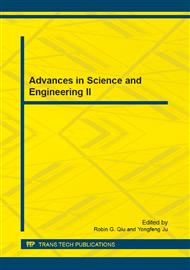[1]
J. Kang, I. Cohen, and G. Medioni, Continuous Tracking within and across Camera Streams, Proceedings of the IEEE International Conference on Computer Vision and Pattern Recognition, pp.267-272, June (2003).
DOI: 10.1109/cvpr.2003.1211363
Google Scholar
[2]
M X Jiang, M Li, H Y Wang. A Robust Combined Algorithim of Object Tracking Based on Moving Object Detection,. Proceedings of the International Conference on Intelligent Control and Information Processing. Dalian, China: IEEE, pp.619-622, August (2010).
DOI: 10.1109/icicip.2010.5564172
Google Scholar
[3]
T. Zhao, R. Nevatia, Tracking multiple humans in crowded environment, Proceedings of the IEEE International Conference on Computer Vision and Pattern Recognition, pp.459-466, January (2004).
DOI: 10.1109/cvpr.2004.1315192
Google Scholar
[4]
D. Comaniciu, V. Ramesh, and P. Meer, Kernel based object tracking, IEEE Transactions on Pattern Analysis and Machine Intelligence, vol. 25, p.564–577, (2003).
DOI: 10.1109/tpami.2003.1195991
Google Scholar
[5]
J. Kang, I. Cohen, G. Medioni, Multi-Views tracking within and across uncalibrated camera streams, First ACM SIGMM international workshop on Video surveillance, Berkeley, California, pp.21-33, November (2003).
DOI: 10.1145/982452.982456
Google Scholar
[6]
A. Mittal and Larry S. Davis, M2Tracker: A multi-view approach to segmenting and tracking people in a cluttered scene, International Journal of Computer Vision. pp.189-203 June (2003).
DOI: 10.1007/3-540-47969-4_2
Google Scholar
[7]
Z. Yue, S.K. Z, and R. Chellappa, Robust two-camera tracking using homography, Proceedings of IEEE International Conference on Acoustics, Speech, and Signal Processing, Montreal, Quebec, Canada, p.1–4, May (2004).
DOI: 10.1109/icassp.2004.1326466
Google Scholar
[8]
S.M. Khan and M. Shah, A multi-view approach to tracking people in crowded scenes using a planar homography constraint, Proceedings of the 9th European Conference on Computer Vision, Graz, Austria, p.133–146, January (2006).
DOI: 10.1007/11744085_11
Google Scholar
[9]
K. Kim and L. Davis, "Multi-Camera tracking and segmentation of occluded people on ground plane using search-guided particle filtering, Proceedings of the 9th European Conference on Computer Vision, Graz, Austria, p.98–109, January (2006).
DOI: 10.1007/11744078_8
Google Scholar
[10]
K. Kim, T.H. Chalidabhongse, D. Harwood, and L.S. Davis, Real-Time foreground-background segmentation using codebook model, Real-Time Imaging, vol. 11, pp.167-256, (2005).
DOI: 10.1016/j.rti.2004.12.004
Google Scholar
[11]
R. Hartley, A. Zisserman. Multiple View Geometry in Computer Vision,. Cambridge, (2000).
Google Scholar


